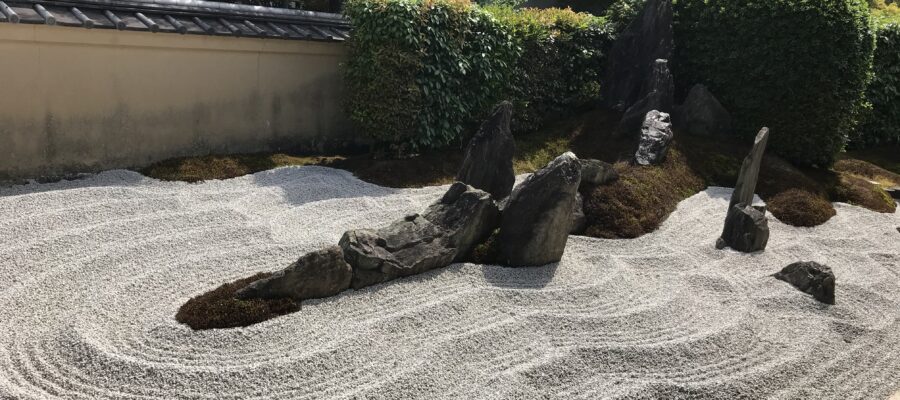NHKカルチャーセンターの講座
大徳寺の塔頭寺院、瑞峯院もNHKカルチャーセンターの講座で、講師の烏賀陽百合さんにご案内いただきました。門をくぐると玄関前も素敵な庭になっていて、大きな石灯篭が目に入ってくるフォーカルポイントになっています。
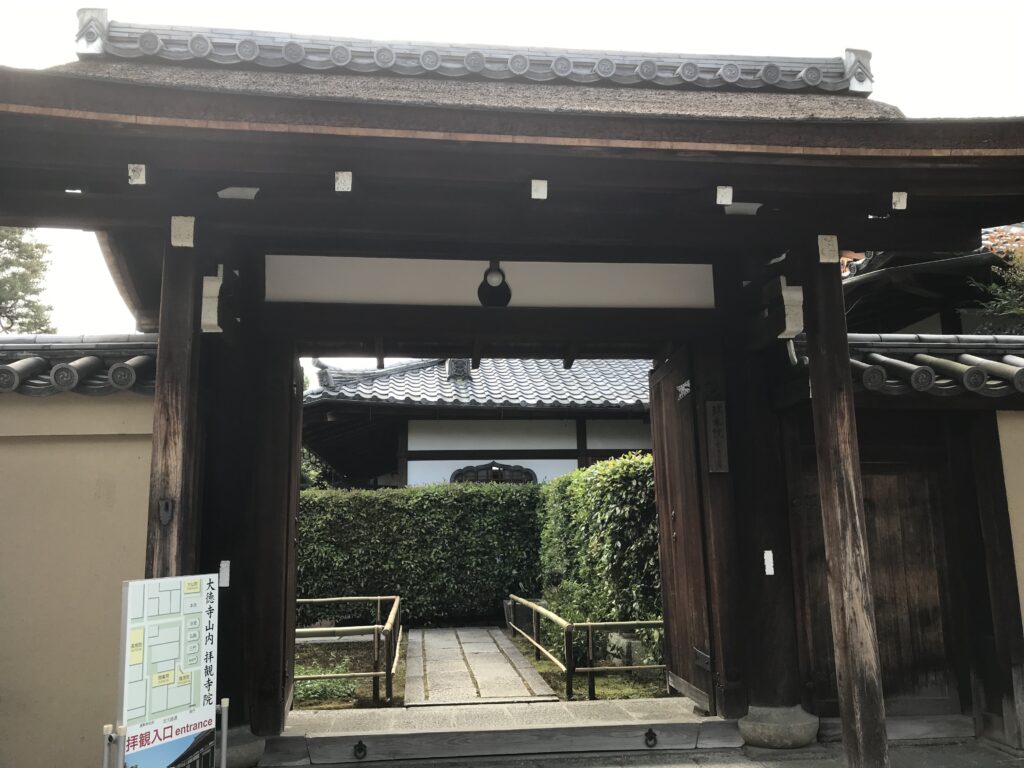
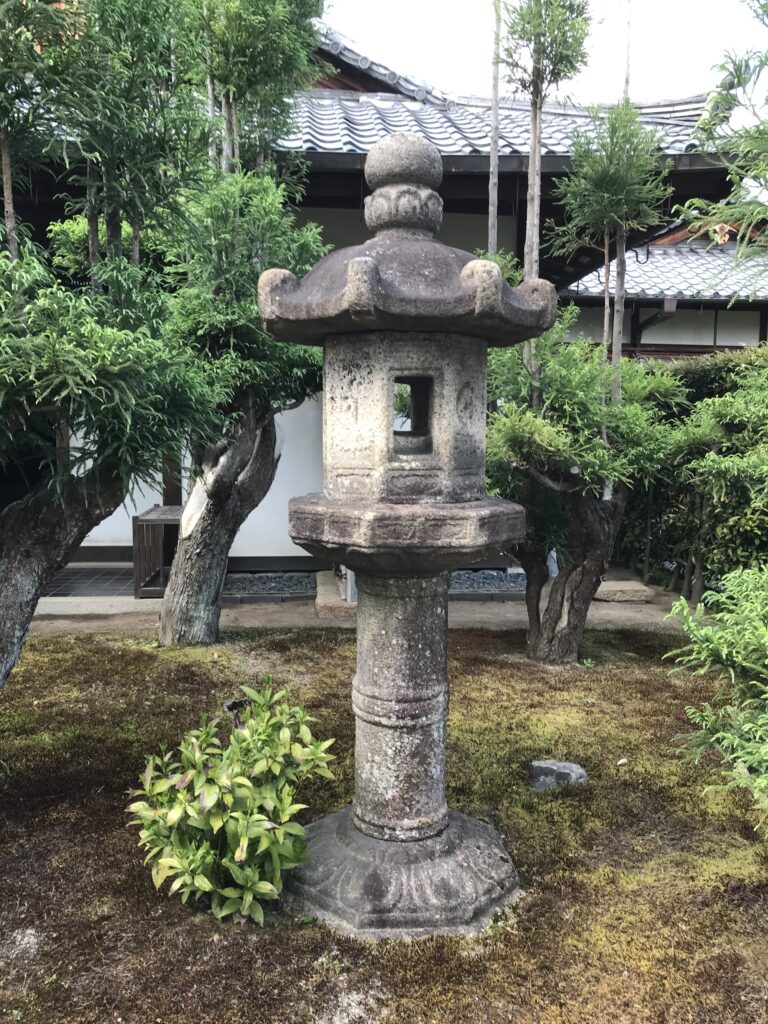
深くて高い砂紋に驚く
まず最初に案内された庭は、方丈前の独坐庭です。第一印象は、なんといっても砂紋が深いし、高い。農機具を改造した道具で1時間かけてつくるそうです。高校生の頃クラブ活動が終わった後、グラン運土を通称“トンボ”という道具で平らに整地していましたが、こんなに深い砂紋をつくるには、砂からかなり強い抵抗があるので、体力もかなり必要だなと感じました。
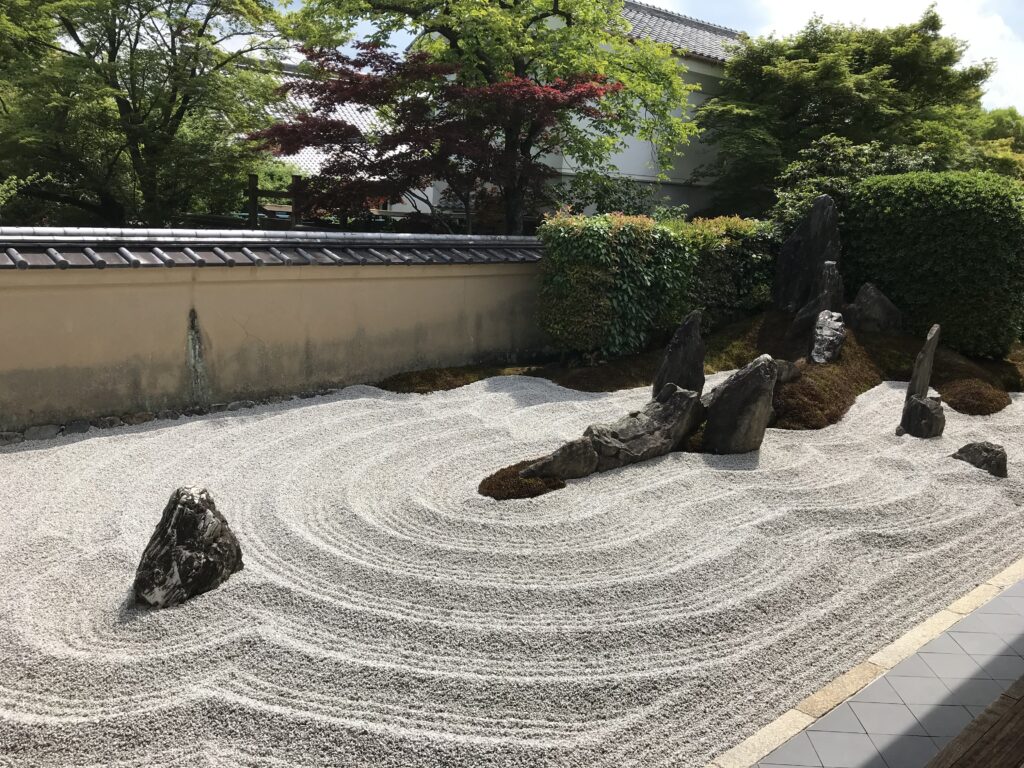
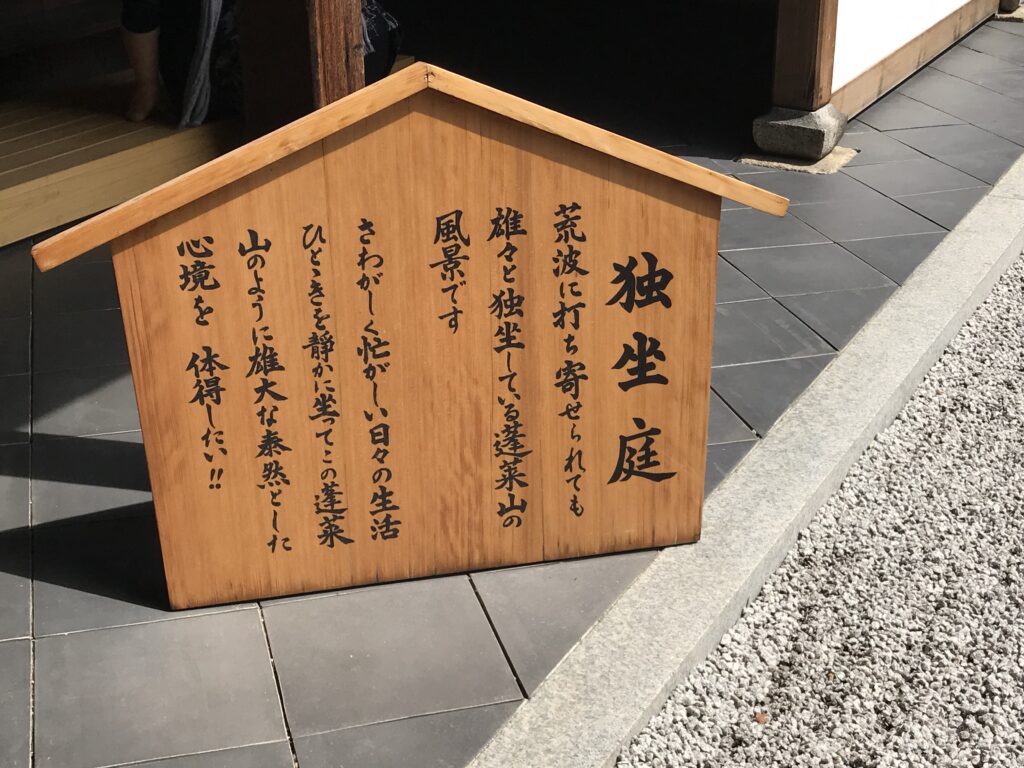
ここで目に付くのは、右側の大きな石で表現した蓬莱山よりも、左側にポツンと一つ、半島を表現した横長石から取り残されてしまったような石です。これは岸壁を表しているそうです。重森三玲さんの庭ですので、石の配置には定評がありますが、離れて置かれた石との距離感が、遠すぎず、近すぎず、庭の名前の一人坐す雰囲気を感じさせてくれます。
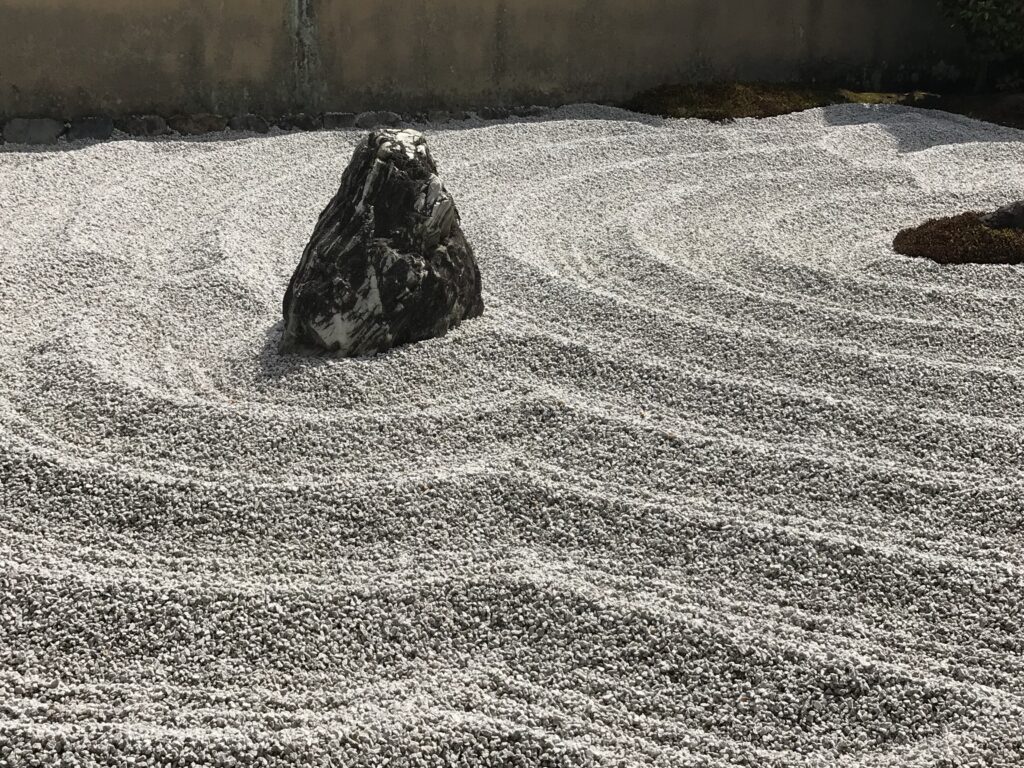
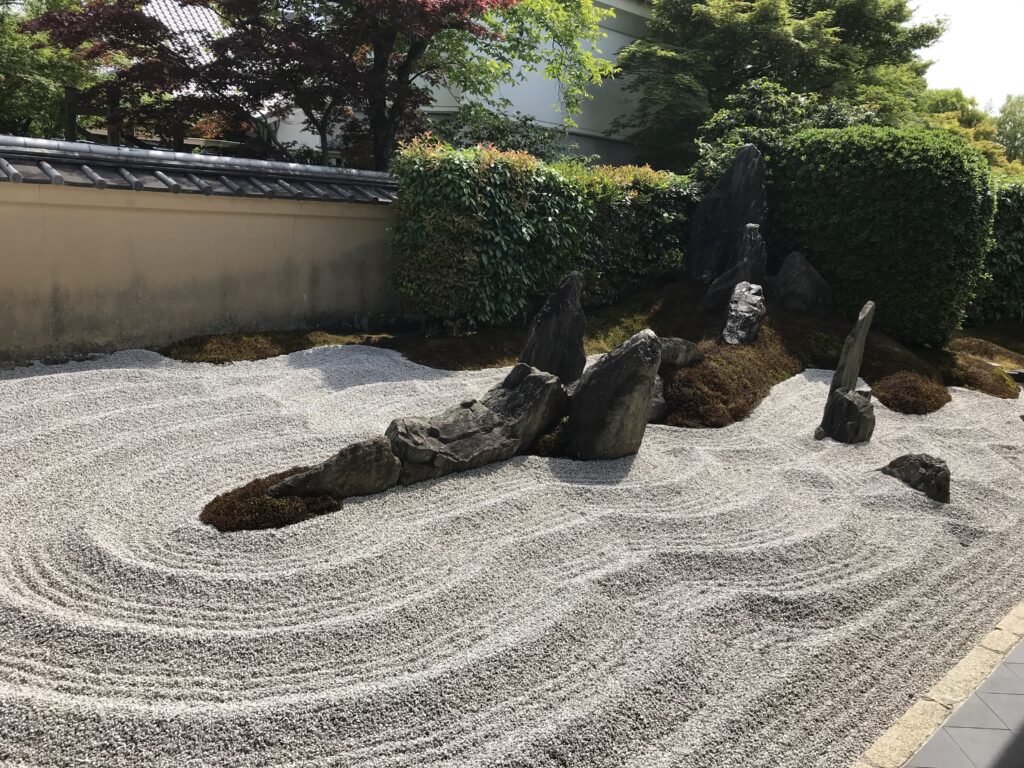
前から見ても、上から見ても良し
大きい石群の側からも庭を眺めてみました。石が全体的に方丈の方に向かって傾いているのが、写真を見て判別できるでしょうか。前傾させることで、より立体的に見える効果を使っているそうです。
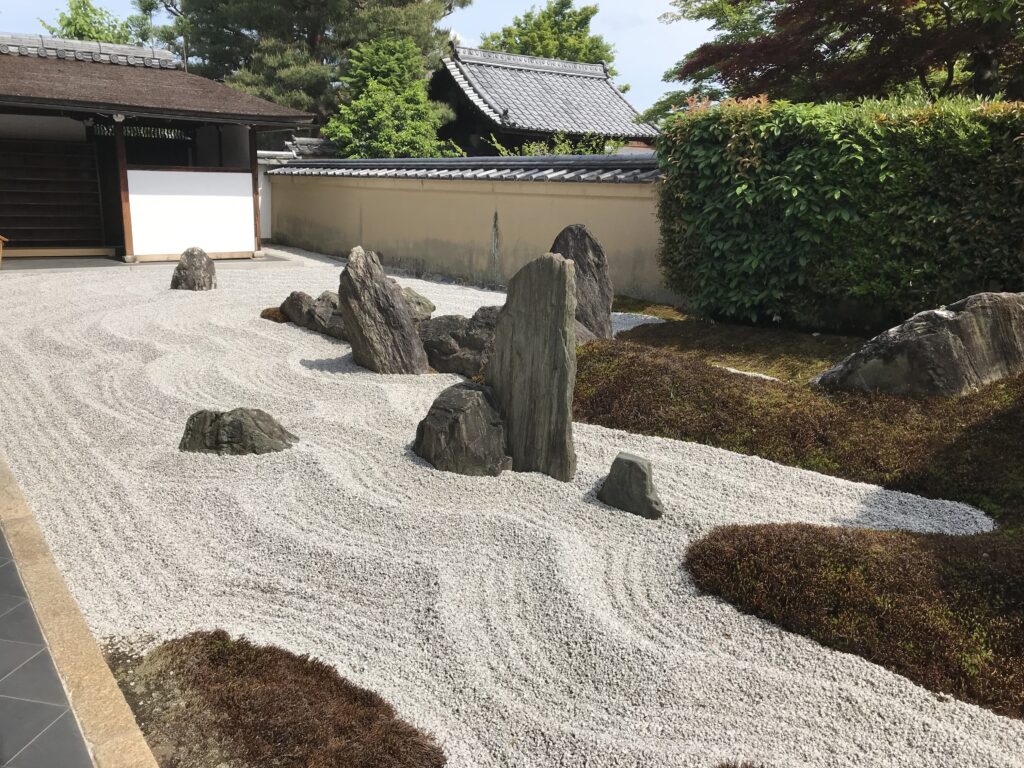
烏賀陽さんの解説によれば、重森三玲さんは上からどう見えるかイメージして作庭しているとのことでしたので、グーグルアースでも見てみました。そしたら、深い砂紋まで見えてびっくりです。一度、お試しください。(完)
瑞峯院の御朱印
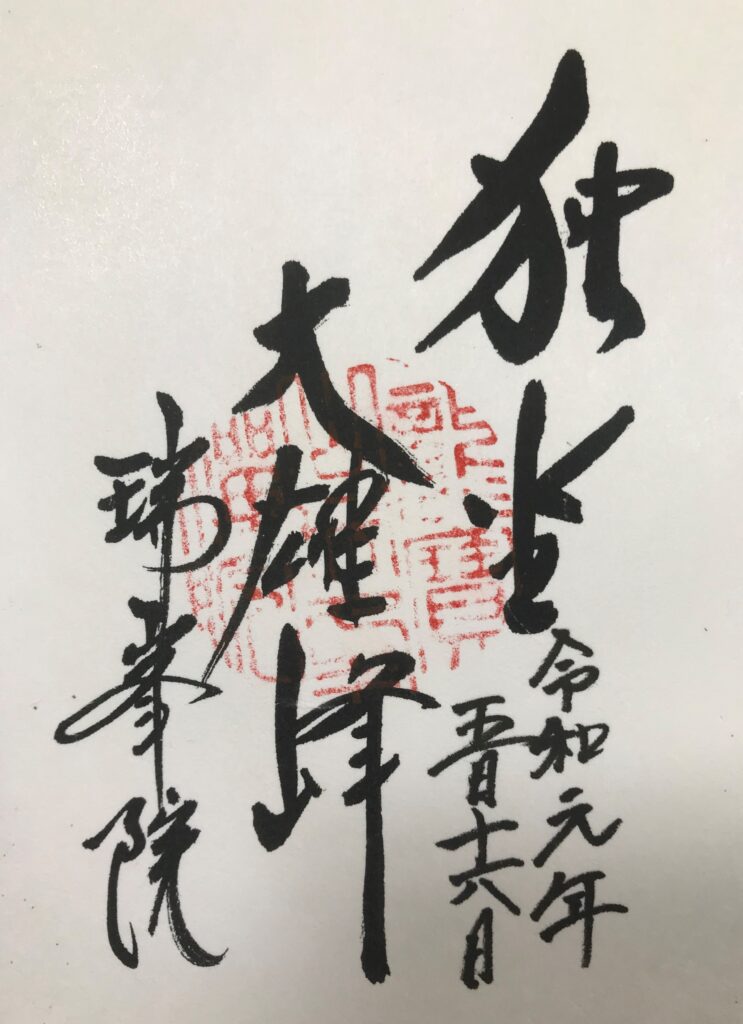
瑞峯院が紹介されている書籍御
烏賀陽百合さんの「しかけに感動する『京都名庭園』」に瑞峯院が解説されています。
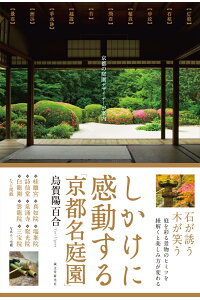
しかけに感動する「京都名庭園」 京都の庭園デザイナーが案内 [ 烏賀陽 百合 ]
価格:1,760円
(2021/5/2 18:44時点)
感想(1件)
Zuihouin Temple (1) Dokuza (Sitting Alone) Garden (English)
Course at NHK Culture Center
Ms. Yuri Ugaya, a lecturer at the NHK Culture Center, showed us around Zuihouin, a sub-temple of Daitokuji Temple. After passing through the gate, I found a beautiful garden in front of the entrance, with a large stone lantern as a focal point.
Amazing deep and high sand crests
The first garden I was guided to was the Dokuza garden in front of Hojo (main) building. My first impression was that the sand patterns were deep and tall. I was told that it takes an hour to make them with a tool that was converted from a farm machine. When I was a high school student, after club activities, I used to use a tool called a “Tombo (dragonfly)” to level out the granite, but I felt that it took a lot of physical strength to make such deep sand crests, as the sand offered quite a strong resistance.
Rather than the large stone on the right that represents Mount Horai, what I saw there was a single stone on the left that seemed to have been left behind by a horizontal stone that represents a peninsula. This is said to represent a quay. Since this is Mirei Shigemori’s garden, the artistic placement of the stones is well known, and the distance between the stones placed apart from each other is neither too far nor too close, giving me a sense of the atmosphere of sitting alone, which is the name of the garden.
Can be viewed from the front or from above
I also looked at the garden from the side of the large stone group. Can you see from the photo that the stones are all tilted toward the Hojo? By tilting them forward, the effect is to make them look more three-dimensional.
According to Ms. Ugaya’s explanation, Mirei Shigemori created the garden by imagining how it would look from above, so I took a look at it on Google Earth. I was surprised to see even deep sand crests. Please give it a try. (End)
Temple Zuihouin (1) Jardin Dokuza (assis seul) (français)
Cours au centre culturel NHK
Mme Yuri Ugaya, conférencière au centre culturel de la NHK, nous a fait visiter Zuihouin, un sous-temple du temple Daitokuji. Après avoir franchi la porte, j’ai découvert un magnifique jardin devant l’entrée, avec une grande lanterne en pierre comme point focal.
Des crêtes de sable hautes et profondes étonnantes
Le premier jardin dans lequel j’ai été guidée était le jardin Dokuza, situé devant le bâtiment Hojo (principal). Ma première impression a été que les motifs de sable étaient profonds et hauts. On m’a dit qu’il fallait une heure pour les réaliser avec un outil transformé à partir d’une machine agricole. Lorsque j’étais lycéen, après les activités du club, j’avais l’habitude d’utiliser un outil appelé “Tombo (libellule)” pour niveler le granit, mais j’avais l’impression qu’il fallait beaucoup de force physique pour réaliser des crêtes de sable aussi profondes, car le sable offrait une résistance assez forte.
Plutôt que la grande pierre à droite qui représente le Mont Horai, ce que j’ai vu là, c’est une seule pierre à gauche qui semble avoir été laissée par une pierre horizontale qui représente une péninsule. On dit que cela représente un quai. Comme il s’agit du jardin de Mirei Shigemori, la disposition artistique des pierres est bien connue, et la distance entre les pierres placées à l’écart les unes des autres n’est ni trop éloignée ni trop proche, ce qui m’a donné une impression d’atmosphère d’assise solitaire, ce qui est le nom du jardin.
Peut être vu de face ou d’en haut
J’ai également regardé le jardin depuis le côté du grand groupe de pierres. Pouvez-vous voir sur la photo que les pierres?
Selon les explications de Mme Ugaya, Mirei Shigemori a créé le jardin en imaginant à quoi il ressemblerait vu d’en haut, alors j’ai jeté un coup d’œil sur Google Earth. J’ai été surpris de voir des crêtes de sable même profondes. Essayez-le, s’il vous plaît. (Fin)
